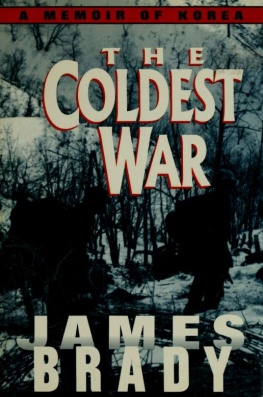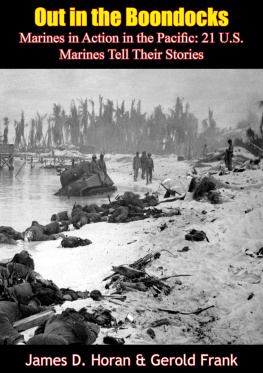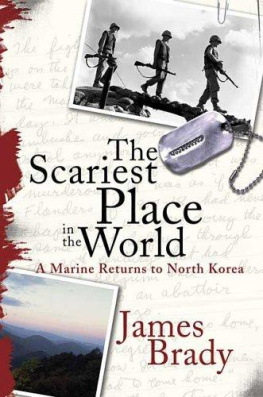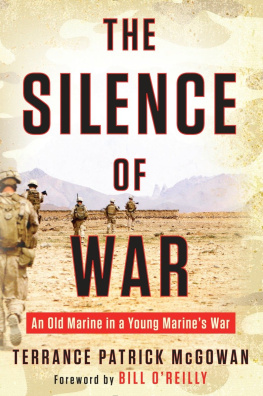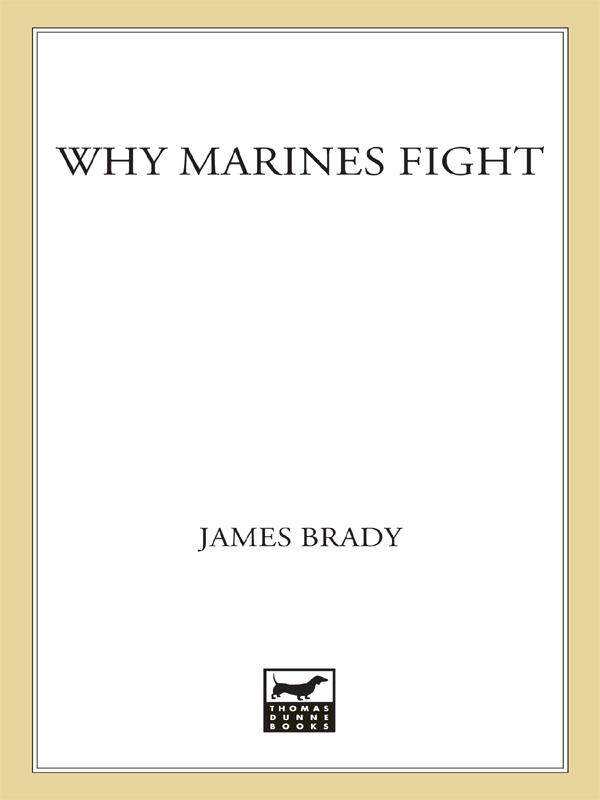WHY MARINES FIGHT. Copyright 2007 by James Brady. All rights reserved. Printed in the United States of America. No part of this book may be used or reproduced in any manner whatsoever without written permission except in the case of brief quotations embodied in critical articles or reviews. For information, address St. Martin's Press, 175 Fifth Avenue, New York, N.Y. 10010.
Brady, James.
Why Marines fight / James Brady.
p. cm.
1. United States. Marine CorpsHistory. I. Title.
VE23.B63 2007
359.9'60973dc22
grandchildren, Sarah, Joe, Nick, and Matthew.
But it is dedicated to all the Marines in all the wars.
PREFACE
T HIS IS THE STORY, RAW AND OFTEN ELOQUENT, LARGELY IN THEIR own words, of the United States Marines who fight America's wars, where they came from and who they were, where and how they fought and too often died, what they later became.
It tries to tell why a man runs toward the guns when every rational instinct would send him away, eluding the guns and their lethal fire. And why Marines do these things not only in so-called "good" wars such as World Wars I and II but in lousy wars like Vietnam and second Iraq.
The Marines in this book have all heard those guns, have fought wars, been ordered into combat by a sheaf of papers directing them to "duty beyond the seas," a lovely and unexpected little poetry lurking in an otherwise banal, bureaucratic boilerplate. It is paperwork like this that over the years has sent men routinely to their deaths, in the France of 1918, to Tarawa and Iwo, to Korea, to Vietnam and Iraq.
Beyond the official blather, with its surprising poetry, is the life-and-death reality of battle, a cruel truth of which Marines are ever being reminded in peaceful places, liberty towns like San Francisco. Where in a classy bar atop the Mark Hopkins Hotel from which you can see the Pacific, and at night watch the riding lights of ships heading toward Asia, there is a small bronze plaque, recalling those thousands of Marines who left this glorious city and its port, shipping out to the Fleet Marine Force Pacific, known in Marine jargon as FMF PAC. Reminding us of men bound for islands under the Southern Cross, for the mysterious East, more recently for the Persian Gulf, Afghanistan, and the Horn of Africa, men pledging in boozy solemnity to their women and fellow Marines, to meet again back here at Top of the Mark after the war.
Which is why the simple little plaque pledges that even in the busiest of happy hours, one bar stool will always be set aside and left empty, held for one of us, for a Marine who had not yet returned, nor probably ever would.
It may be unnecessary to remind anyone, but for two centuries American Marines have been among the most admired of warriors. Fighting as cutlass-swinging boarding parties and as snipers in the rigging and mast heads of frigates in the Revolution and the War of 1812, through the Civil War (on that occasion fighting for both sides!), and in two world wars. More recently in northeast and southeast Asia, in today's Middle East and Central Asia. The Corps' famous battles are bone and sinew of American lore, from the Barbary Coast to Montezuma's Halls and the Boxer Rebellion, from the Great War's Chateau Thierry to the murderous little banana wars of Central America, to World War IPs Guadalcanal and the black volcanic sands of Iwo Jima, to Korea's deadly seawall at Inchon and that epic fight in the snow against the Chinese army at the Chosin Reservoir; still later on the Perfume River at Hue and in the steaming jungles and highlands of Vietnam; and now in the Afghan hills, the Khyber Pass, and snowy crags, and in the deserts, lethal roadsides, and sinister back alleyways of Baghdad, the Persian Gulf, and the Horn of Africa.
Marine uniform trousers are decorated with a vertical crimson stripe symbolic of Marine blood shed by officers and NCOs in the Mexican War. Officers' caps are still marked with an embroidered cross, signaling to Marine snipers high above the hand-to-hand melee of a ship's deck just who was friend and not foe. It was in October 1859 that a detachment of eighty-six Marines, under Colonel Robert E. Lee and Captain Jeb Stuart, stormed the arsenal at Harpers Ferry to capture abolitionist John Brown and his men, ominously foreshadowing by nearly two years the outbreak of Civil War hostilities at Fort Sumter.
But why do Marines do these things? Why do we fight? And just why fight so well? Are we simply mercenaries, fifteenth-century Italian condottieri five hundred years out of sync? At a time when people are fed up with war, you may ask if anyone really cares why soldiers answer the call? It's not as if we were important, the skeptic remarks, not as if we were the serious men who run hedge funds.
I've confronted such questions for a long time, from the first fire-fight I was ever in, up in the mountains of North Korea in 1951, and been pondering the answers since. A couple of years ago, following a reporting assignment's return to North Korea, out on a promotional book tour about my trip, I was doing the talk shows, visiting Marine bases, delivering lectures, all this as Afghanistan smoldered and Iraq lapsed from quagmire into religious war. I was asked, and I asked myself and other Marines, why we went to war, when so many other Americans, and understandably so, were turning against even the notion of another war, one not begun out of necessity but of choice, almost out of feckless whim.
It was then that I determined to begin work on this book. In its pages, in their own spoken or written words, emotional or chill, inspiring, often brutal, half a hundred fighting Marines talk about their own wars, good and bad. About how they came to be Marines, about their own combat, delineating the small details that flesh out every man's adventure, how each of us felt and fought, and trying to explain why a sane man would risk his life in an unpopular war that sensible people at home had turned against or half-forgotten. What makes a good soldier go in harm's way not in the national interest or for the country's very existence, but for some cobbled-up, second-rate cause?
Maybe, like Tom Wolfe's astronauts, we just had the right stuff. But whence it came, how sustained and directed, those questions hang there. Colonel John W. Thomason Jr. tried following World War I to define the Marines of 1918, of his time, "They were the old breed of American regular, regarding the service as home, and war as an occupation."
The men in this book are in varying degree heroic figures, many of them anonymous grunts, others celebrated, a few household names. But they have this one thing in common: They all fought this country's enemies as United States Marines in American wars. And are uniquely qualified to answer my impertinent question, Why do Marines fight?


